FMCSA Audits Urine Specimen Collection Sites, Are you Ready?
40.61(c) – Does the collector positively identify the employee by photo identification or know the procedures to identify the employee before beginning the collection process?
40.355(a) – Was the employee required to sign a consent form?
40.45(a) – Does the employer utilize the standard five-part, carbonless, Federal Drug Testing Custody and Control Form (revised as of 10/1/10)?
40.61(f) – Does the collector direct the employee to remove outer garments (e.g., jacket, coat, hat) and to leave personal belongings such as purses and briefcases with the outer garments?
40.61(f)(4) – Does the collector direct the employee to empty his or her pockets and display the items in them to ensure that there are no items present that could be used to adulterate the specimen?
40.61(e) – Does the collector explain the basic collection procedure to the employee and show the employee the instructions on the back of the CCF?
40.63 – After the employee has removed any outer clothing and displayed the contents of their pockets, does the collector instruct the employee to wash and dry his/her hands?
40.63(c) – Are collection containers sealed, and does the employee or collector remove the sealed wrapper in the presence of the employee?
40.43(b) – Does the collector ensure that in the privacy enclosure for urination: (1) all sources of clear water have been eliminated, (2) possible specimen contaminants have been removed; and (3) all places where paraphernalia could be hidden were secured or removed?
40.43(c) – If a non-dedicated facility (public restroom or hospital examining room) is used for collections, is the location used for testing secured during drug testing by: 1) visually inspecting the privacy enclosure; 2) assuring that undetected access (e.g., through a rear door) is prevented; and 3) posting limited access signs during the collection process?
40.43(b)(2) – Does the water in the toilet (and toilet tank if it is not secured) contain a bluing agent?
40.43(d)(3) – Does only the collector handle the urine specimen before it is poured into the specimen bottles?
40.65(a) – Once the employee provides a urine specimen to the collector, does the collector then observe that the specimen quantity is at least 45 milliliters and check the split specimen box in Step 2 of the CCF?
40.65(b) – Does the collector check the temperature of the specimen and record this information on the CCF?
40.63(c) – Are the two specimen bottles sealed until it is time to pour the sample from the collection container?
40.71(b)(2) & (3) After specimen collection and temperature reading, does the collector pour at least 30 mL of urine into the primary specimen bottle and 15 mL of the remaining urine specimen into the second specimen bottle to be used as the split specimen?
40.63(a) – Does the collector complete Step 1 of the custody and control form by selecting: (1) the reason for the test (e.g., pre-employment), and (2) the drug tests to be performed (e.g., THC, COC, PCP, OPI, AMP)?
40.71(b)(4) & (5) – Does the collector securely place tamper-evident bottle seals over the bottle caps/lids and down the sides of each specimen bottle?
40.71(b)(5), (6), (7) – Does the collector write the date on each tamper-evident specimen bottle seal, only after the seals are affixed to the bottles and does the employee initial each tamper-evident specimen bottle seal only after the seals are affixed to the bottles and dated by the collector?
40.73 – After the tamper-evident specimen bottle seals are initialed by the employee, does the collector fill out the CCF accordingly (Step 5)?
40.43(d)(2) – Does the collector keep the employee’s collection container within his/her and the employee’s view between the time the employee has urinated and the specimen bottle is sealed?
40.33(a) – Do you have access to a current version of Part 40: DOT Urine Specimen Collection Procedures?
40.33(d) – Have each of the urine collectors hired since August 1, 2001 received training in accordance with the amended Part 40 regulations (effective August 9, 2001)? If so, could I see their training records?
40.33 – Have the urine collectors trained prior to August 1, 2001 been updated on the new regulations?
40.43(a) – Is the facility used for urine collections securely maintained at all times?
40.43(e) – Are only authorized personnel permitted in any area of the designated collection site where urine specimens are collected or stored?
40.43(e) – Is security of the collection materials and completed specimens within the collection site maintained at all times?
40.61(a) – Does the collector know what actions must the collection site take if a employee does not arrive to take a scheduled test?
40.61(b) – Does the collector know what is done if a employee says he/she is not ready to begin the urine collection process because of inability to urinate at the time?
40.61(f)(5) – Does the collector know what is done if you find the employee has material that could be used to tamper with a specimen?
40.191(d) – Does the collector know what is done if a employee refuses to cooperate with the collection process, what three steps are taken by the collector?
40.65(c)(3) – Does the collector know what is done if an employee provides an adulterated sample, and refuses to allow a second specimen to be collected under observed collection, what is done with the initial sample?
40.65(b)(1), (4), (5) – Does the collector know what is done if the temperature of a urine specimen is outside the acceptable range?
40.65(b)(6) – Does the collector know what specimen is sent to the lab is if the initial specimen is out of temperature range, and a second specimen is collected under direct observation?
40.67(g) – Does this collection site always have available a same-gender collector, in case an observed collection is needed?
40.67(b) – Can the collector explain when direct observation procedures are required (Return to duty/Follow Up)?
40.67(i) – Can the collector explain the direct observation procedures (raise shirt, blouse, dress/skirt above the waist and lower clothing and underpants to show, by turning around, to show they do not have a prosthetic device then observe urination)?
40.193(b) – Does the collector know what to do if the employee is unable to provide a specimen (shy bladder) of at least 45 milliliters?
40.193(b) – Does the collector know what to do with the original insufficient specimen?
40.193(b)(4) & (5) – Does the collector know what do if the employee has not provided a sufficient specimen within three hours of the first unsuccessful attempt to provide the specimen?
40.193(b)(2) – Does the collector know what to do if the employee is in the three-hour period during which an attempt to collect a sufficient urine specimen must be made and it is time to close the collection facility?
40.199(b) – Does the collector know what the impact is on a test result if the collector does not sign and print his/her name in Step 4 (certification statement) of the CCF, so that the portion of the CCF is blank?
40.203(d) – Does the collector know what the impact is on a test result if the collector uses a non-DOT drug testing form for a DOT-required test, and the problem is not corrected?
40.203(d) – Does the collector know what the impact is on a test result if the employee doesn’t sign the certification statement on Copy 2 (Step 5) of the CCF and the collector doesn’t make note of this on the “Remarks” line?
40.208(a) – Does the collector know what the impact is if the specimen temperature was not checked and the “Remarks” line does not contain an entry regarding the temperature being out of range?
40.73(b) – Does the collector know how often the collection site ships specimens to the laboratory?
40.73(a)(9) – Does the collector know how soon after a collection are the CCF copies sent to the MRO and DER?
40.73(a)(9) – Does the collector know how long the collection site must retain the Collector’s copy (Copy 3) of the CCF?
40.33(f) – If a drug test is cancelled because of a collector mistake, does the collector know what corrective action must be taken with the collector who made the mistake?
40.205(b) – When a flaw is identified after a drug test is completed, does the collector know what is the process by which the error is corrected?
40.205(a) – If a collector detects an error while a drug test is still in process, may the collector initiate a second test if that is the only way to correct the error?
40.209(a) – Does the collector know why it is important for the collection site to correct procedural problems that are not sufficient to cancel a drug test?

